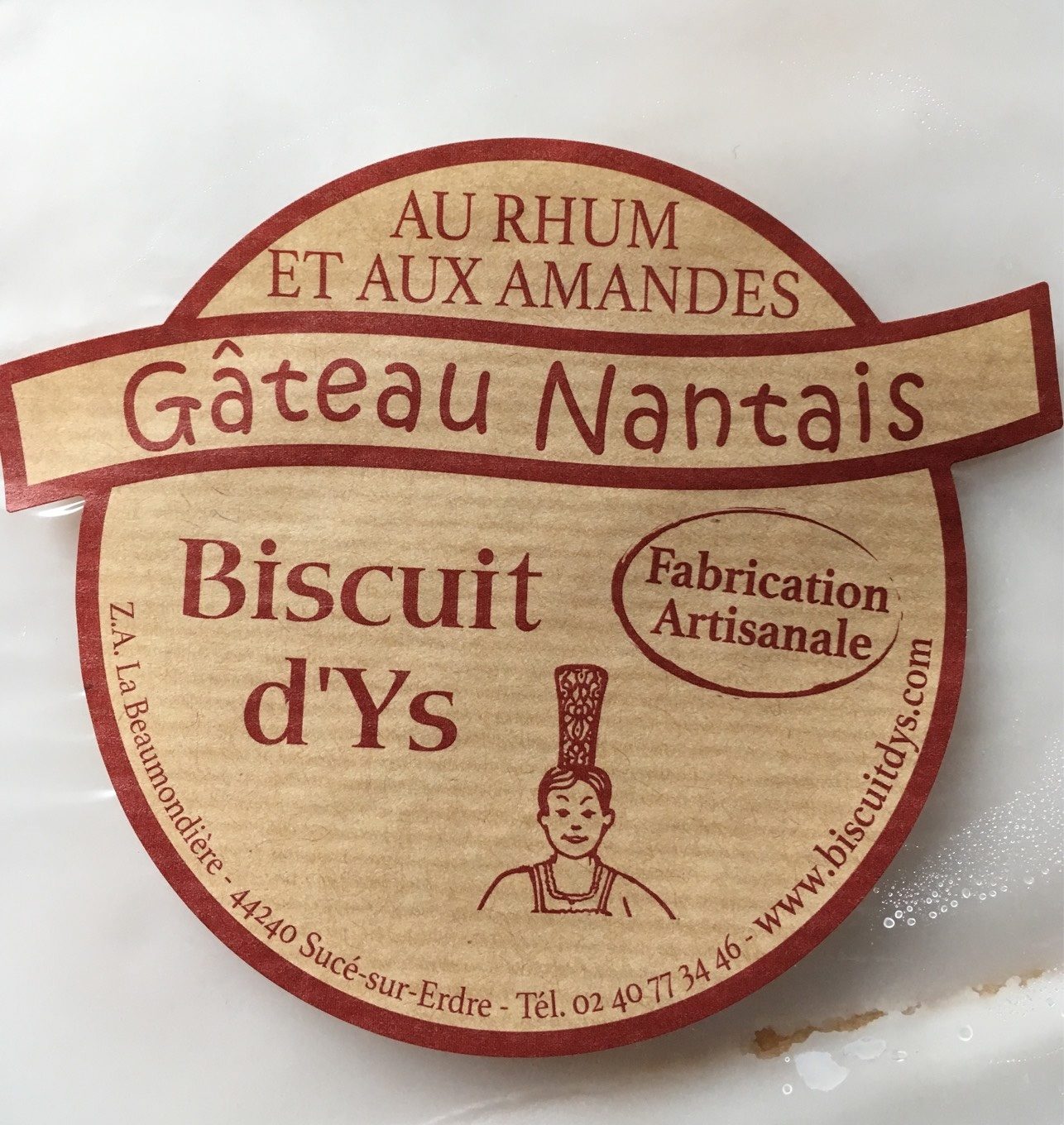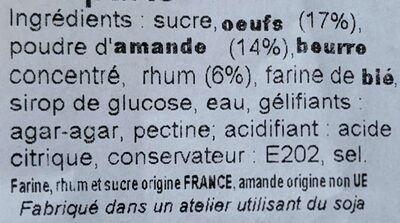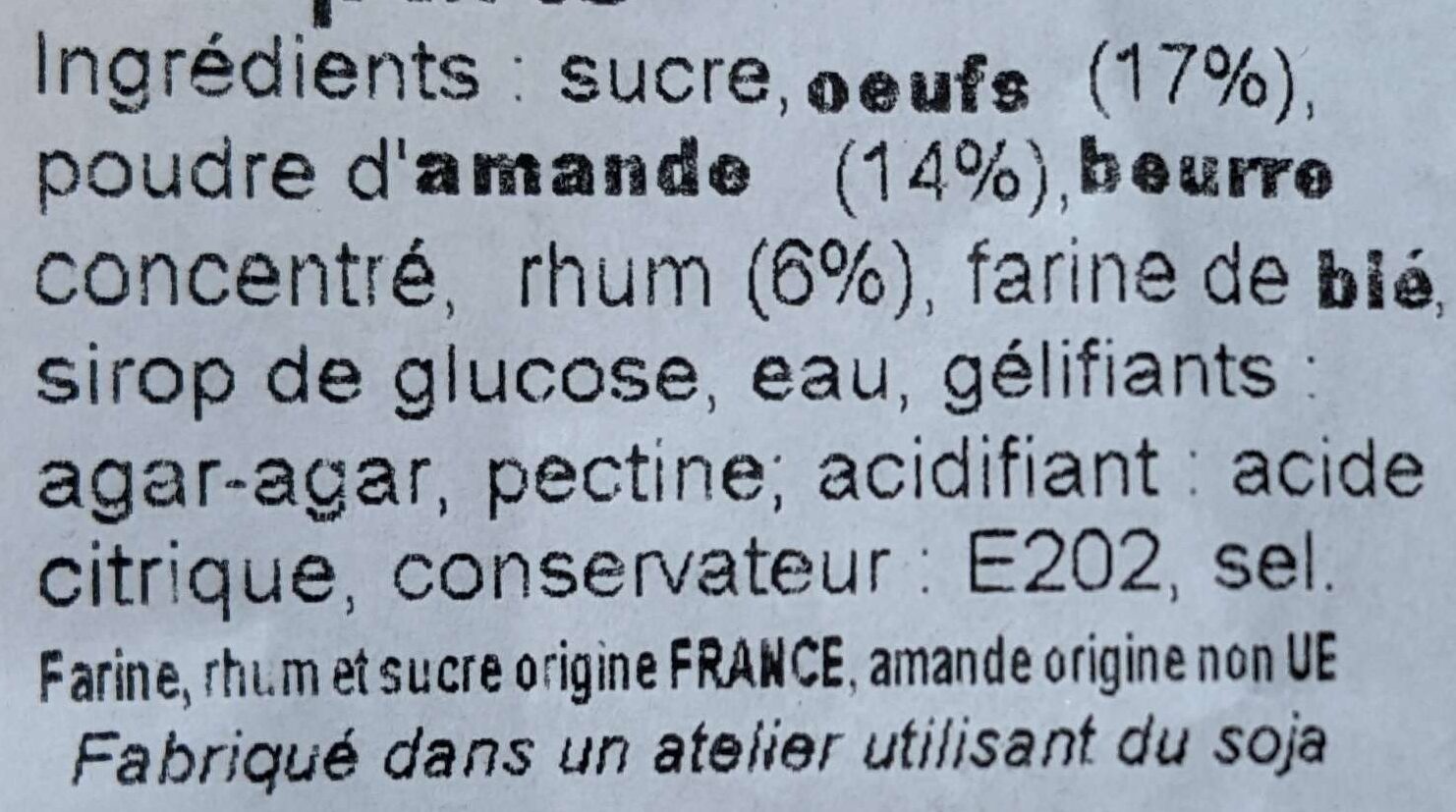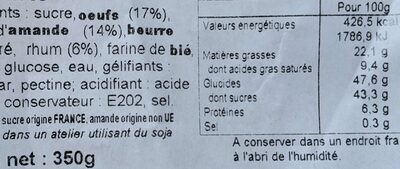Gâteau nantais au rhum et aux amandes - Biscuit d'Ys - 350 g
This product page is not complete. You can help to complete it by editing it and adding more data from the photos we have, or by taking more photos using the app for Android or iPhone/iPad. Thank you!
×
Barcode: 3353630000924 (EAN / EAN-13)
Common name: Gâteau nantais
Quantity: 350 g
Brands: Biscuit d'Ys
Categories: Snacks, Desserts, Sweet snacks, Biscuits and cakes, Cakes, fr:Gâteaux nantais
Manufacturing or processing places: Sucé-sur-Erdre, France
Stores: Super U
Countries where sold: France
Matching with your preferences
Report a problem
Data sources
Product added on by kalepom
Last edit of product page on by roboto-app.
Product page also edited by kiliweb, openfoodfacts-contributors, packbot, sebleouf, yuka.UTRKZUVaUXN2ZU1EbjlvVG93SFd4ZTlOL2JDa1REMk1JZVVlSVE9PQ, yuka.Ui9BWUZmOWNpY2hRdmNZMzF6Ly8rNDlWMkxTR1JWS2xjK0FmSWc9PQ.












